Rock and roll is a genre of popular music that evolved in the United States during the late 1940s and early 1950s. It originated from African American music such as jazz, rhythm and blues, boogie-woogie, electric blues, gospel, jump blues, as well as country music. While rock and roll's formative elements can be heard in blues records from the 1920s and in country records of the 1930s, the genre did not acquire its name until 1954.
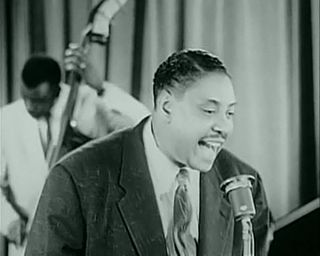
Rhythm and blues, frequently abbreviated as R&B or R'n'B, is a genre of popular music that originated within African-American communities in the 1940s. The term was originally used by record companies to describe recordings marketed predominantly to African Americans, at a time when "rocking, jazz based music ... [with a] heavy, insistent beat" was becoming more popular. In the commercial rhythm and blues music typical of the 1950s through the 1970s, the bands usually consisted of a piano, one or two guitars, bass, drums, one or more saxophones, and sometimes background vocalists. R&B lyrical themes often encapsulate the African-American history and experience of pain and the quest for freedom and joy, as well as triumphs and failures in terms of societal racism, oppression, relationships, economics, and aspirations.
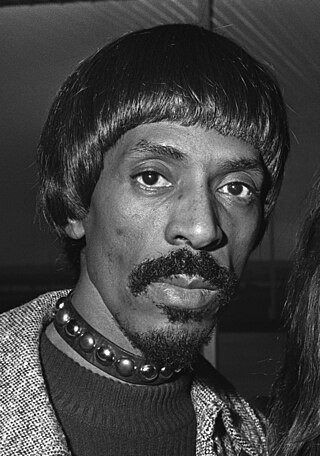
Izear Luster "Ike" Turner Jr. was an American musician, bandleader, songwriter, record producer, and talent scout. An early pioneer of 1950s rock and roll, he is best known for his work in the 1960s and 1970s with his wife Tina Turner as the leader of the Ike & Tina Turner Revue.
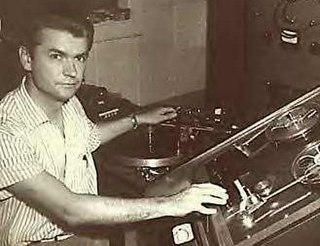
Samuel Cornelius Phillips was an American disc jockey, songwriter and record producer. He was the founder of Sun Records and Sun Studio in Memphis, Tennessee, where he produced recordings by Elvis Presley, Roy Orbison, Jerry Lee Lewis, Carl Perkins, Johnny Cash, and Howlin' Wolf. Phillips played a major role in the development of rock and roll during the 1950s, launching the career of Presley. In 1969, he sold Sun to Shelby Singleton.

Sun Records is an American independent record label founded by producer Sam Phillips in Memphis, Tennessee on February 1, 1952. Sun was the first label to record Elvis Presley, Charlie Rich, Roy Orbison, Jerry Lee Lewis, Carl Perkins, and Johnny Cash. Prior to that, Sun had concentrated mainly on African-American musicians because Phillips loved rhythm and blues and wanted to bring it to a white audience.
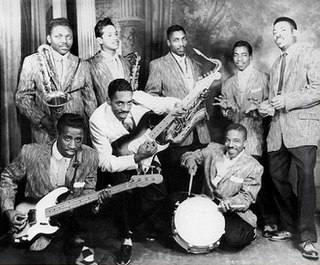
Kings of Rhythm are an American music group formed in the late 1940s in Clarksdale, Mississippi and led by Ike Turner through to his death in 2007. Turner would retain the name of the band throughout his career, although the group has undergone considerable line-up changes over time.
The origins of rock and roll are complex. Rock and roll emerged as a defined musical style in the United States in the early to mid-1950s originating from African-American music. It derived most directly from the rhythm and blues music of the 1940s, which itself developed from earlier blues, the beat-heavy jump blues, boogie woogie, up-tempo jazz, and swing music. It was also influenced by gospel, country and western, and traditional folk music. Rock and roll in turn provided the main basis for the music that, since the mid-1960s, has been generally known simply as rock music.

Sun Studio is a recording studio opened by rock-and-roll pioneer Sam Phillips at 706 Union Avenue in Memphis, Tennessee, on January 3, 1950. It was originally called Memphis Recording Service, sharing the same building with the Sun Records label business. Sun Studio is perhaps most famous for its role in the early years of Elvis Presley’s career.
Holiday Records was an American record label based out of Philadelphia, Pennsylvania which was active in the early 1950s. Owned by Dave Miller, who also owned Essex Records, it is best known for releasing some of the earliest recordings widely identified as rock and roll, most notably "Rocket 88" by Bill Haley and His Saddlemen in 1951.

Jackie Brenston was an American singer and saxophonist who, with Ike Turner's band, recorded the first version of the rock-and-roll song "Rocket 88" in 1951.

"A Fool in Love" is the debut single by Ike & Tina Turner. It was released on Sue Records in 1960. The song is Tina Turner's first release with the stage name "Tina Turner" although she had been singing with Ike Turner and his Kings of Rhythm since 1956. It was the first national hit record for bandleader Ike Turner since the number-one R&B hit "Rocket 88" in 1951, for which he did not receive proper credit.

Goree Chester Carter or Christer Carter, was an American singer, guitarist, drummer, and songwriter. He was also credited with the stage names Little T-Bone, Rocky Thompson and Gory Carter, and recorded music in blues genres such as electric blues, jump blues and Texas blues, as well as rock and roll.

Raymond Earl Hill was an American tenor saxophonist and singer, best known as a member of Ike Turner's Kings of Rhythm in the 1950s. He also recorded as a solo artist for Sun Records and worked as a session musician.
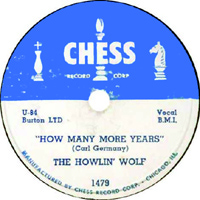
"How Many More Years" is a blues song written and originally recorded by Howlin' Wolf in 1951. Recorded at the Memphis Recording Service – which later became the Sun Studio – it was released by Chess Records and reached No. 4 on the Billboard R&B chart. Musician and record producer T Bone Burnett has described "How Many More Years" as "in some ways ... the first rock’n’roll song". It was a double-sided hit with "Moanin' at Midnight", which reached No. 10 on the R&B chart.

"Moanin' at Midnight" is a blues song written and recorded by Howlin' Wolf in 1951. The recording was released on Chess Records as his debut single. It charted on Billboard's R&B chart, but the B-side, "How Many More Years," became the popular side of the record.

The Sun Sessions is a collection of early recordings that musician Ike Turner and his band the Kings of Rhythm recorded from 1951–1958 for Sun Records. Many of the recordings were previously unissued until Charly Records released the album Sun: The Roots Of Rock: Volume 3: Delta Rhythm Kings in 1976. The tracks on The Sun Sessions were digitally remastered and released by Varèse Sarabande in 2001.

Takin' Back My Name: The Confessions of Ike Turner is a 1999 autobiography by American musician Ike Turner with British writer Nigel Cawthorne.

This article contains information about albums and singles released by of American musician and bandleader Ike Turner.
Willie Kizart was an American electric blues guitarist best known for being a member of Ike Turner's Kings of Rhythm in the 1950s. Kizart played guitar on "Rocket 88" in 1951, which is considered by some accounts to be the first rock and roll record. The record is noted for featuring one of the first examples of distortion ever recorded; played by Kizart.
















